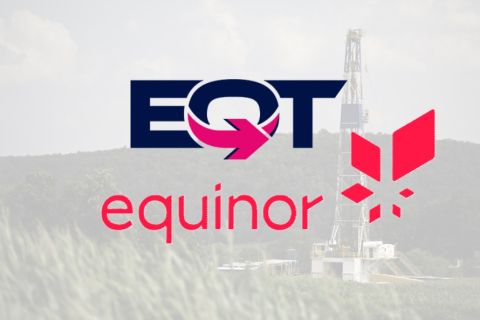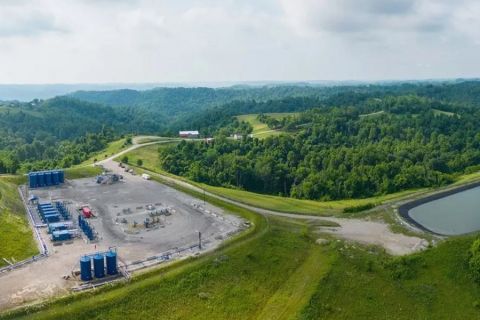
Learn more about Hart Energy Conferences
Get our latest conference schedules, updates and insights straight to your inbox.
Presented by:

Editor's note: This "Tech Trends" section appears in the new E&P newsletter. This weekly section highlights the latest upstream technologies and services for the oil and gas industry. The copy herein is compiled from press releases and product announcements from service companies and does not reflect the opinions of Hart Energy. Submit your company’s updates related to new technology products and services to Ariana Hurtado at ahurtado@hartenergy.com.Subscribe to the E&P newsletter here.
CGG and Geoptic sign R&D collaboration agreement for CCS monitoring
CGG has signed an R&D collaboration agreement with Geoptic to jointly research and assess a novel borehole solution for monitoring the spread of CO2 in subsurface storage sites for carbon capture and storage (CCS). The agreement focuses on developing a new version of Geoptic’s DIABLO muon tracking tool specifically for CCS applications. Geoptic deploys DIABLO as part of its use of cosmic ray muons to passively and non-intrusively image the internal structure of objects. It has already gained experience in deploying muon technologies for subsurface surveys, such as its imaging through the overburden of railway tunnels. Building on this success, Geoptic is developing muon sensors suitable for use down boreholes for the imaging of CCS projects several kilometers underground, as they can be especially useful for environmentally sensitive areas. Application of these sensors could expand to include surveying construction sites, structural monitoring, mining and other subsurface monitoring arenas. This collaboration is part of CGG’s initiative to further its leadership around technologies that advance the measurement, monitoring and verification of CO2 storage. CGG will draw on its extensive expertise in geophysical imaging and integrated geoscience solutions to process and model the data acquired by Geoptic’s downhole tools. The collaboration is focused on delivering a new continuous long-term subsurface monitoring tool that will reduce the risks associated with CO2 leakage and enhance the safety of CO2 storage projects.
DarkCircus AI's automatic PDC bit dull grading app aggregates data for better decision-making
DarkCirrus AI recently launched a beta test version of the company’s automatic PDC bit dull grading app. When looking at how to optimize bit selection and improve future product designs, a critical step is measuring and understanding bit dull condition and aggregating that information to make better, more informed decisions. The bit dull grading app is designed to automate the process of measuring cutter wear while making the data more accessible to the user, presented in a simple analytics dashboard. After uploading pictures of the bit to the app, it uses machine learning and artificial intelligence to analyze the images and produce a report with dull grade and cutter damage statistics. The app is currently available for free, and users can also access the app as an API to build their own customized versions.
Well Data Labs and Ubiterra offer single platform that improves operational outcomes and economics
Well Data Labs Inc. has entered into a strategic partnership with Ubiterra Corp. to provide E&P customers with a comprehensive solution for the analysis of real-time and post-job completions, drilling and geosteering data. The partnership is a significant step forward in enabling customers to leverage enhanced analytical insights alongside advanced visualizations. Access via a single platform to both companies' data workflows allows operators to make more informed critical business decisions that improve operational outcomes and economics while mitigating risk. The enabling technologies behind the partnership include Well Data Labs Completions and Ubiterra's ZoneVu cloud-based application. The integration between ZoneVu and Well Data Labs Completions platform provides operators with a seamless solution for capturing, visualizing and analyzing drilling and frac data.
EOT technology utilizes ML to perform real-time predictions and anomaly detection
Embassy of Things Inc.'s (EOT) AI Edge Controller enables the use of trained machine learning (ML) models to perform real-time predictions and anomaly detection at the edge of operation centers and uses closed-loop, event-response operational action to instantly avoid expensive downtime and increase production output. During the training phase of ML models, large datasets of sensors are needed to optimize their prediction quality. This requires significant compute and storage power, which is only available in the cloud. However, the need for anomaly detection and self-optimization occurs at the operational edge where there is no compute, storage or internet connection. The AI Edge Controller’s technology serves as a bridge by delivering the rather small, trained ML models from the cloud to the edge. This is where EOT’s Twin Talk’s Operational Insight Engine streams real-time operational data through the trained ML models to instantly detect equipment abnormalities, diagnose issues, reduce false alerts, self-optimize production and avoid expensive downtime by acting before machine failures occur.
InEight's technology provides enhanced revenue and forecasting tools
InEight Inc. has released a time-phased
LYTT repurposes fiber-optic infrastructure to support remediation of shut-in well
LYTT, a software company delivering real-time insights to oil and gas operators by combining fiber-optic data with hybrid analytics, has repurposed existing fiber-optic infrastructure to support the remediation of a shut-in well in the North Sea. The well had been shut-in for more than three years as traditional diagnostic approaches failed to identify a solution to a sustained casing pressure issue. With price volatility continuing to cause uncertainty for oil producers, the ongoing cost and resource requirement of managing unproductive assets is higher than ever. When traditional approaches to troubleshooting well integrity issues fail to deliver, it can leave operators with sunk costs from multiple remediation attempts alongside missed revenue—a particularly significant issue when the shut-in asset is in a costly offshore installation. For the asset in question, LYTT was brought in after the operations team was unable to pinpoint the source of a leak in the tubing using a multi-finger caliper tool. Although a wall thickness anomaly was identified and a patch applied, this action failed to fully address the source of the leak, and the pressure issue remained. A further diagnostic attempt using a wireline acoustic sensing tool also failed to identify the source of the issue. Using the insights LYTT generated, the operations team was able to develop a reliable remedial design to address multiple leak points and bring the well back online. Read the North Sea case study here.
Ikon Science tool solves subsurface knowledge management challenges
Ikon Science has released Curate, a scalable, cloud-enabled knowledge management tool designed to provide cost efficiencies along with faster and more accurate decision-making. Curate enables energy companies to collaborate within a single workspace to access all subsurface data with streamlined workflows, allowing data democratization and business learnings that drive action. Curate helps companies accelerate exploration, minimize portfolio risk, and optimize well planning and drilling activities, achieving greater results while preserving capital and human resources to create a stronger bottom line. Energy companies are challenged to navigate the large amounts of complex data they possess as it is often siloed within different departments and software programs. This inefficiency causes 20-30% in lost personnel time. The inability to instantly access data leads to isolated workflows, poor utilization and compromised decision-making, resulting in locked in capital and delayed revenue due to sub-optimal exploration, appraisal and development processes. Curate solves this dilemma by providing instant access to subsurface information, limitless performance and an ability to leverage specialist knowledge in wider workflows. It provides tight integration with legacy databases and open industry standards, such as the OSDUTM data platform, enhancing the ability of organizations to consistently build on existing knowledge through workflow applications and streamlined processes. This allows companies to achieve better business outcomes by realizing efficiency gains across all exploration, appraisal and development workflows. Curate provides companies the flexibility of deploying scalable solutions from SaaS delivery through to Enterprise deployment.
Recommended Reading
EQT Strengthens Appalachian Position in Swap with Equinor
2024-04-16 - EQT, the largest natural gas producer in the U.S., is taking greater control of the production chain with its latest move.
The JF Petroleum Group Acquires General Contractor GE Goodson Service
2024-04-15 - Following the transaction, GE Goodson will operate as The JF Petroleum Group’s Midland branch on a go-forward basis.
EQT, Equinor Agree to Massive Appalachia Acreage Swap
2024-04-15 - Equinor will part with its operated assets in the Marcellus and Utica Shale and pay $500 million to EQT in exchange for 40% of EQT’s non-operated assets in the Northern Marcellus Shale.
Marketed: Foundation Energy 162 Well Package in Permian Basin
2024-04-12 - Foundation Energy Fund V-A has retained EnergyNet for the sale of a 162 Permian Basin opportunity well package in Eddy and Lea counties, New Mexico and Howard County, Texas.
UAE's ADNOC Recently Eyed BP as Takeover Target, Sources say
2024-04-11 - The Emirati giant, Abu Dhabi National Oil Co., considered all options when looking at BP, including buying a big stake.



